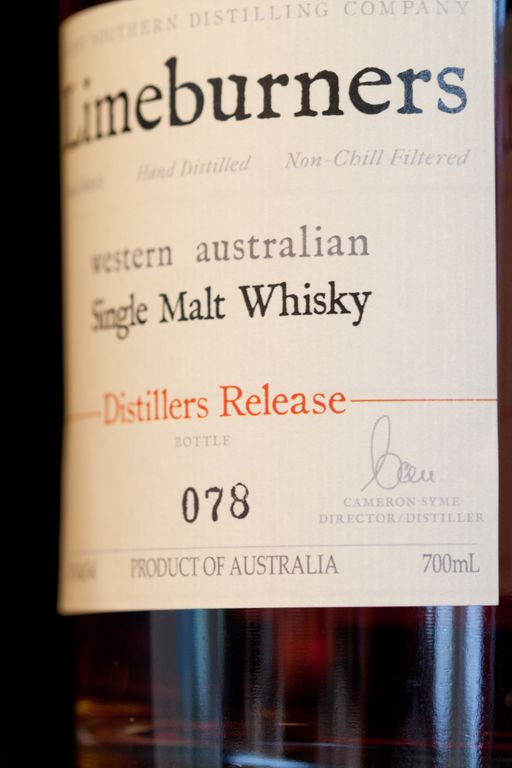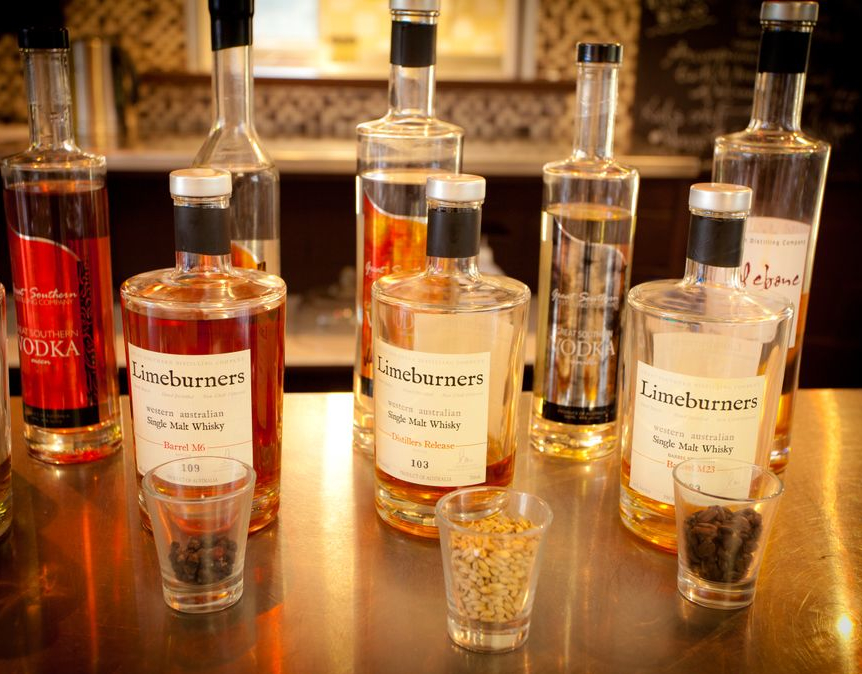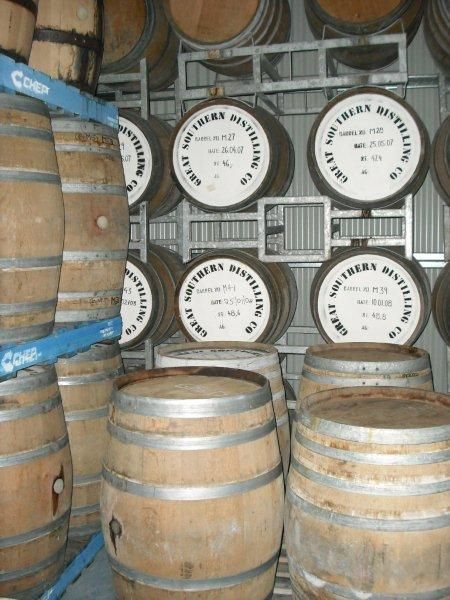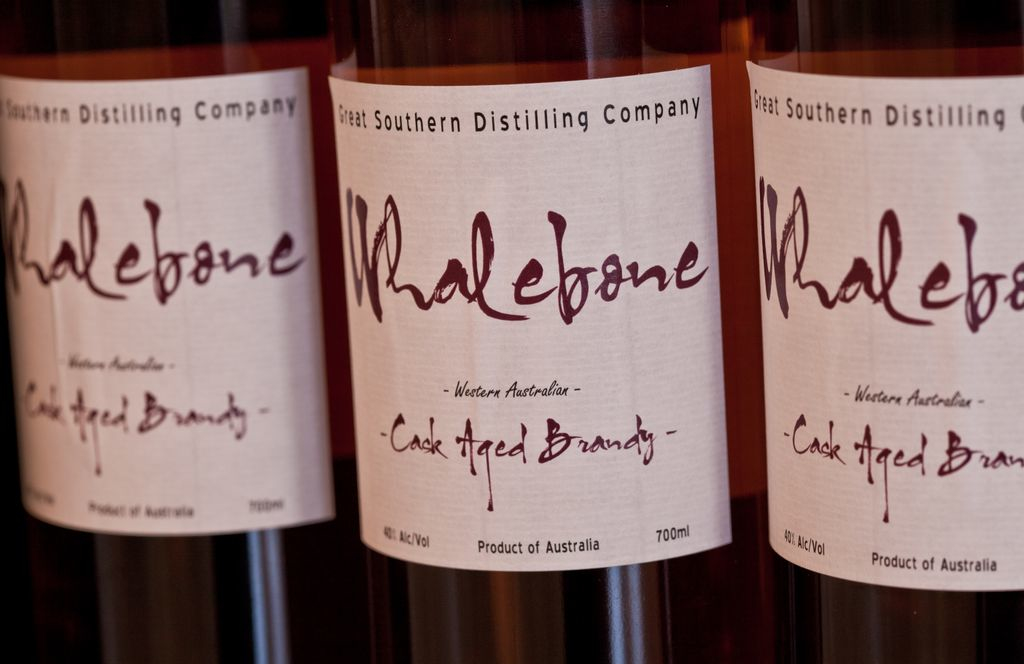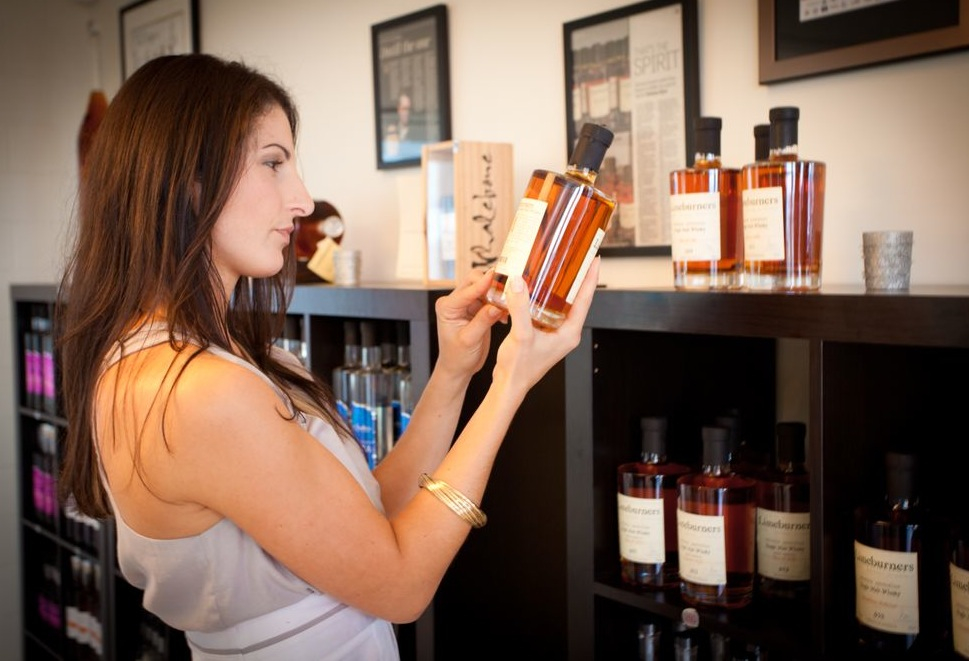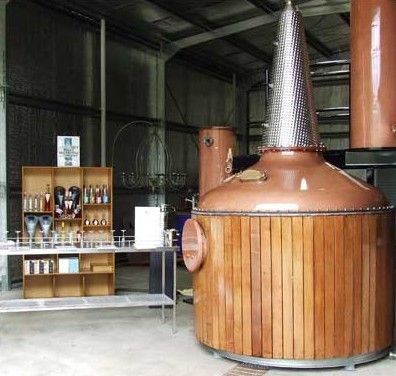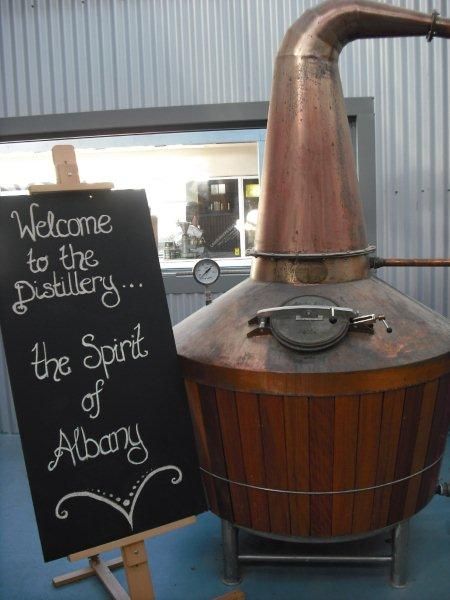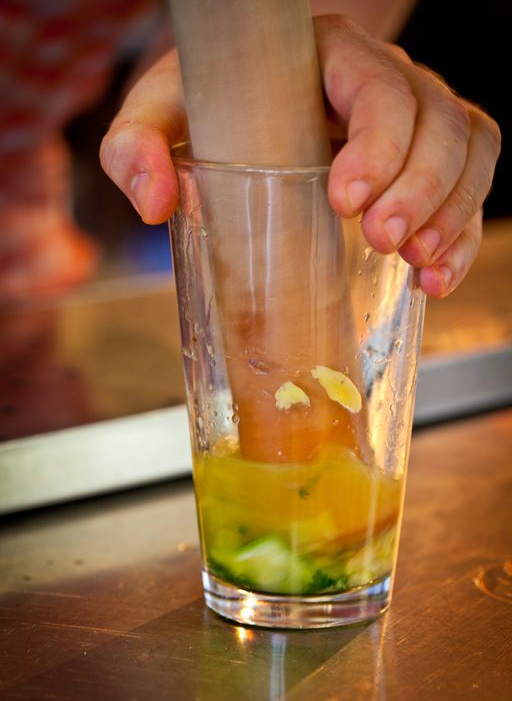Could Australia Become The Next Great Whiskey Producer?
A bottle of Limeburners Single Malt Whisky.
Various bottles of Limeburners Single Malt Whisky (and their tasting notes) in front of Great Southern Vodka.
The Limeburners barrel store.
Bottles of Whalebone, a cask aged brandy from Great Southern Distilling Company.
Checking out one of the many varieties of Limeburners Single Malt Whisky.
The distillery is set up for a tasting.
A sign welcoming visitors sits next to a 600-liter spirit still.
A cocktail is muddled during a tasting at the distillery.
America has a long, rich history with whiskey. Jack, Jim, Evan, Elijah, Pappy – we're on a first name basis with the brown spirits that haunt the liquor landscape. So how does a tiny Australian distillery on the remote Western coast of Australia fit into the history of brown? To find out, I asked Cameron Syme, the proprietor of the Great Southern Distilling Company, which also happens to be the first Australian distillery to make sour mash whiskey. Will Australia become the next great dark spirits hub? Only time will tell. Until then, Syme will keep blazing the trail and hopefully other enterprising Aussies will follow.
Why set up a distillery in Western Australia?
I thought "we have all of the right ingredients here: top-quality grain, clear pristine water and an unpolluted environment. Why aren't we making whiskey in Australia?" I was 19 at the time and American bourbon was my drink of choice. I dreamt of setting up a distillery, but realized I didn't have the skills or knowledge or capital to be able to do anything about it, other than research (and I mean more than just dying to sample every whiskey I could). I went on to spend 10 years as an accountant and was a few years into being a lawyer when I had a case that made me reassess what I was doing, maybe it was an early midlife crisis. I decided to spend some time working in distilleries, did a distilling trade qualification and ordered my stills.
How do Australians feel about whiskey?
Australians love their bourbon. Jim Beam and Jack Daniels are the biggest brands here. I hear stories from within the industry that Australia is the single largest market for bourbon in the world. Things have developed in the last 10-15 years and a number of the other key bourbon brands now have good exposure here. We get Blanton's, Woodford Reserve, Booker's, Buffalo Trace, Rip Van Winkle and many others. The big brands also heavily promote here. However looking at the American publications, there are a number of bourbons that we don't get over here...now that's a pity.
Describe the moment when you decided to start distilling.
I was sitting in my office in a high rise building in the city of Perth. I was looking out of my office window – my office was 35 floors up and looked out over the coast with an amazing view – and I was talking to my wife on the phone. She said "Tell me something good about your job," and I said "The view out of my office window." At that moment, I thought to myself I really need to do something different. I made the decision to follow my dream, quit my job as a lawyer for a multinational energy company and open a whiskey distillery. That was about 11 years ago now.
When did you first start drinking whiskey? Do you have a favorite brand?
I started brimming bourbon at 19. I had a really good couple of party summers, and bourbon featured in those. Australia only had a few bourbons at the time, not like today. My first bourbon was Jim Beam, my early favorite was Wild Turkey, I did like Sherman T. Cooper but I don't seem to be able to find that anymore. These days I like my Jack Daniels.
Do you have a favorite whiskey cocktail?
Although technically it's not traditionally a bourbon cocktail, I like a Sazerac with bourbon instead of rye. I've had a great Sazerac with Woodford Reserve. A colleague of mine put me onto those and I'm grateful.
Tell me about Tiger Snake. What kind of flavor notes can people expect? Is it similar to any bourbon already on the market?
I wanted to make an Australian whiskey with a mixed grain bill that was similar to the great US bourbons and Tennessee whiskeys. I'm not looking to make a copy of a U.S. whiskey, but rather a whiskey made with the same grain ingredients, but one that reflects the climate, grain source and location where the whiskey is made. If you like, in wine terms, the terroir.
Tiger Snake Sour Mash isn't similar to any bourbon on the market. Our mash bill is 55% corn, 25-30% malted barley with the balance made up of wheat and rye. The corn is very evident in the back of the palate and the spiciness from the rye comes through. I think Tiger Snake is a unique Australian whiskey.
How does your location influence the flavor of Tiger Snake?
We are situated right on the edge of Princess Royal Harbour on the south coast of Western Australia. Our whiskey is made, matured, and bottled by hand within 100 meters of the Southern Ocean. We have some clear maritime influences becoming evident in our whiskey. The climate here is mild and temperate. It never gets below 0 celsius (32°F), and most days are between 15 and 22 degrees (60°F-90°F). At the other end in summer we get on average one day a decade that's over 41 degrees Celsius (105°F). That mild climate allows our whiskey to mature slowly and quietly.
Beyond those influences, our grain is sourced locally, grown in the regions around our distillery. These are great barley growing regions where some of the world's best barley is grown. We have environmental riches here that made this the perfect place to make whiskey.
Where can an American find Tiger Snake? Any plans to bring it to the States?
We're still in discussions with U.S. distributors. Watch this space. We definitely plan to get some over there. Unfortunately U.S. laws prevent us sending directly to the U.S. and every year we get some pretty heavy letters from the government and banks telling us we'd better not export any alcohol directly to consumers. We've had to decline some direct orders recently. The only option at the moment is to purchase and have a friend send it to you as a gift.
Read more about Australia on Food Republic:

